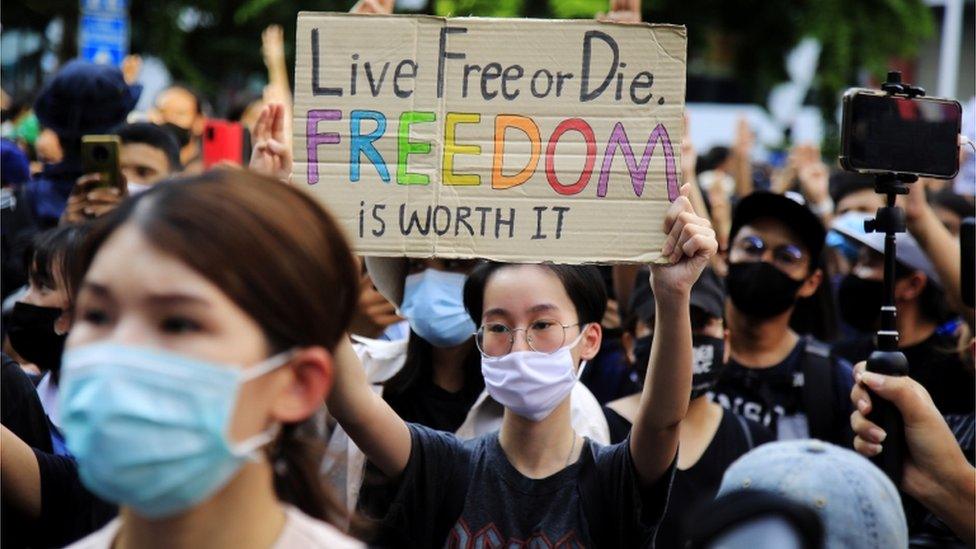Thailand protests: More than 40 injured as clashes rock Bangkok
- Published
Protesters and police clash outside Thai parliament
At least 41 people were left injured after clashes between protesters and police in the Thai capital, Bangkok.
Protesters were attempting to reach parliament on Tuesday, where lawmakers were debating possible changes to the constitution.
They hurled smoke bombs and bags of paint at police, who retaliated with water cannon and tear-gas solution.
The proposed constitutional changes have been one of the core demands of the months-long protest movement.
Others included reforms to the monarchy and the removal of Prime Minister Prayuth Chan-ocha - a former general who seized power in a 2014 coup.
But the BBC's Jonathan Head, who was at the scene, said many activists were worried that parliament would dismiss most of their demands - in particular, the one calling for reform of the monarchy.
Legislators are expected to vote on whether to accept any of the proposed changes by Wednesday evening local time.
The reforms that the protesters are calling for could make Thailand's King Maha Vajiralongkorn more accountable and also reform the senate, where the members are unelected.
What happened on Tuesday?
Tuesday's protest is said to be the most violent since the student-led movement emerged in July.
It started when a group of demonstrators tried to cut through razor-wire barricades near parliament. They hurled smoke bombs and bags of paint at lines of riot police.
In response, police used a water cannon to try to force them back and when that failed, they used the cannon to fire a liquid laced with a tear-gas solution.

Demonstrators could be seen trying to wash the irritant from their eyes.
Health officials said five people had been treated in hospital for the effects of tear gas, while others were treated at the scene.
Some protesters suffered gunshot wounds, though police denied using live rounds or rubber bullets during the operation, according to news agencies AFP and Reuters.
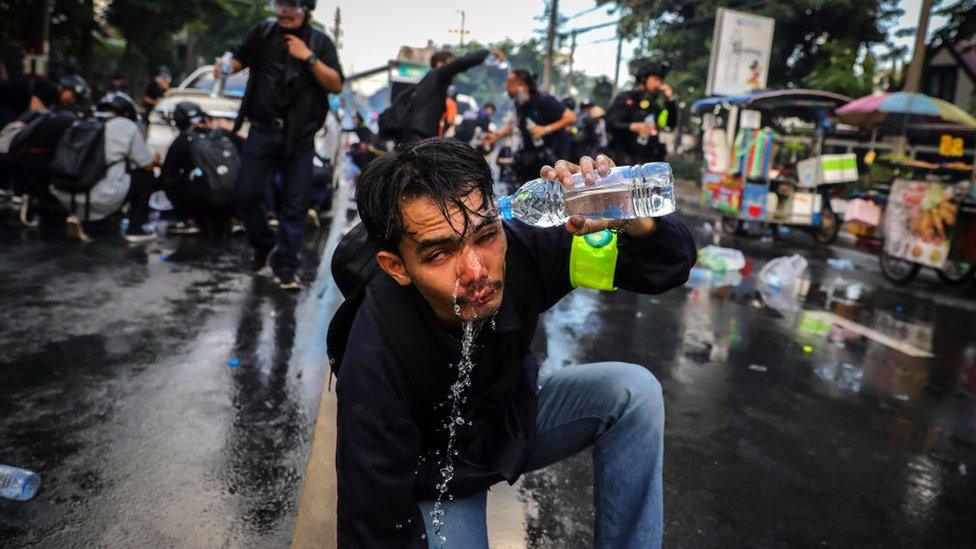
Some protesters tried to shelter behind giant inflatable rubber ducks, which they had intended to float down the river behind parliament as lawmakers debated inside.
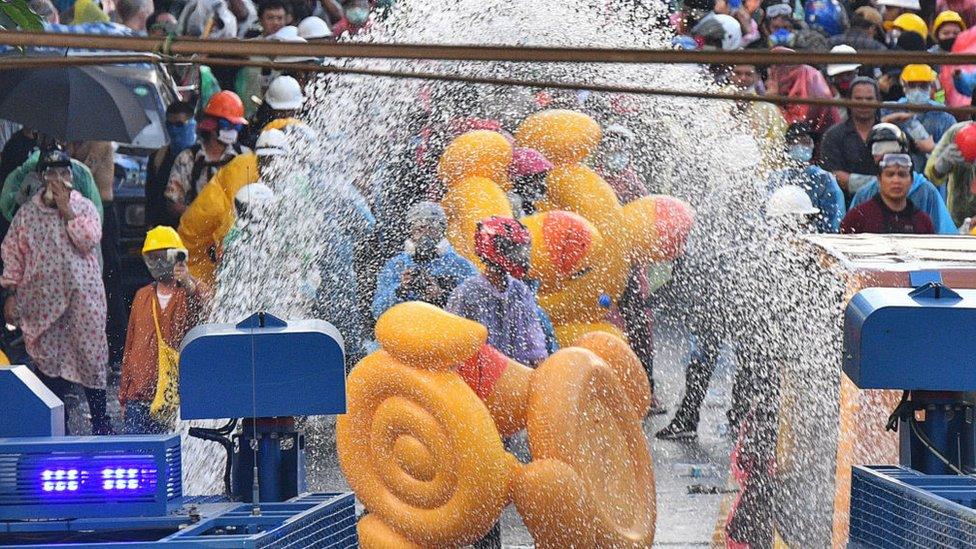
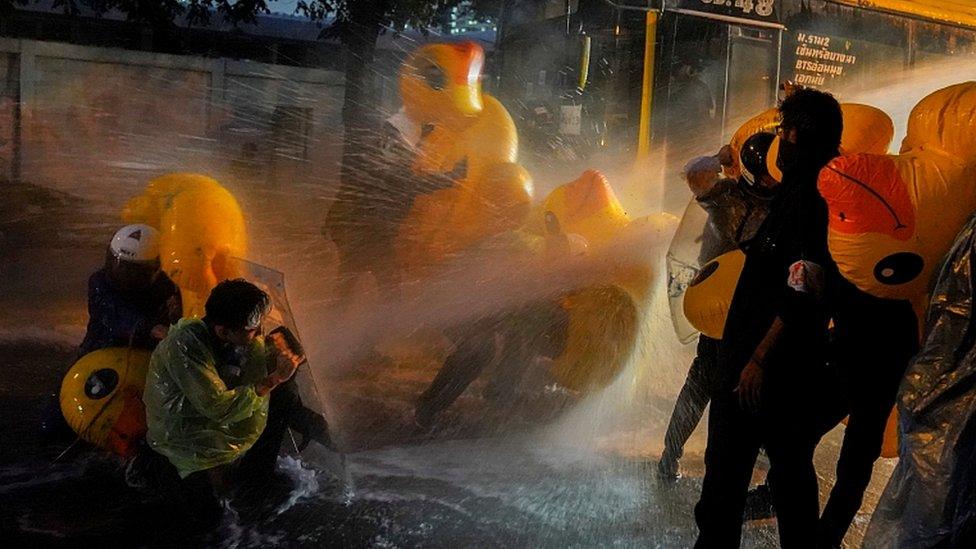
Amid the chaos, anti-government protesters then clashed with pro-monarchy supporters, with the rival groups hurling objects at each other.
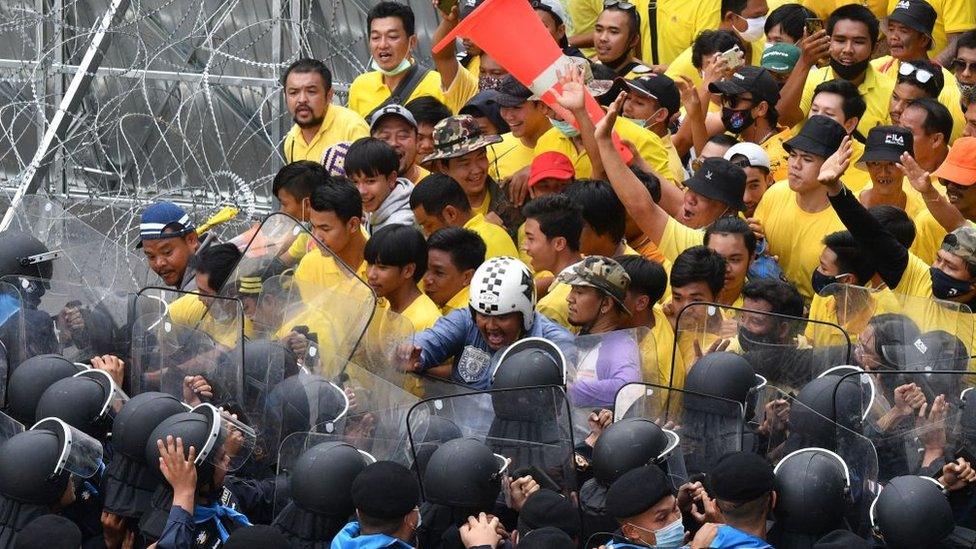
Police intervened to keep the two groups apart.
Why are there protests in Thailand?
Thailand has a long history of political unrest and protest, but a new wave began in February after a court ordered a fledgling pro-democracy opposition party to dissolve.
Protests were re-energised in June when prominent pro-democracy activist Wanchalearm Satsaksit went missing in Cambodia, where he had been in exile since the 2014 military coup.
But things really kicked off when protesters began questioning the powers of the monarchy.
The move sent shockwaves through a country which is taught from birth to revere and love the monarchy and fear the consequences of talking about it.
Thailand's lèse-majesté law, which forbids any insult to the monarchy, is among the strictest in the world.
The definition of what constitutes an insult to the monarchy is unclear and human rights groups say the law has often been used as a political tool to curb free speech and opposition calls for reform and change.
Royalists have come out to oppose the student-led demonstrations - and say the protesters want the abolition of the monarchy, something they deny.
One protester, Panusaya Sithijirawattanakul, said their intention "is not to destroy the monarchy but to modernise it, to adapt it to our society".

You may also be interested in:
Milk Tea Alliance: The Asian youth activists fighting for democracy

- Published8 November 2020
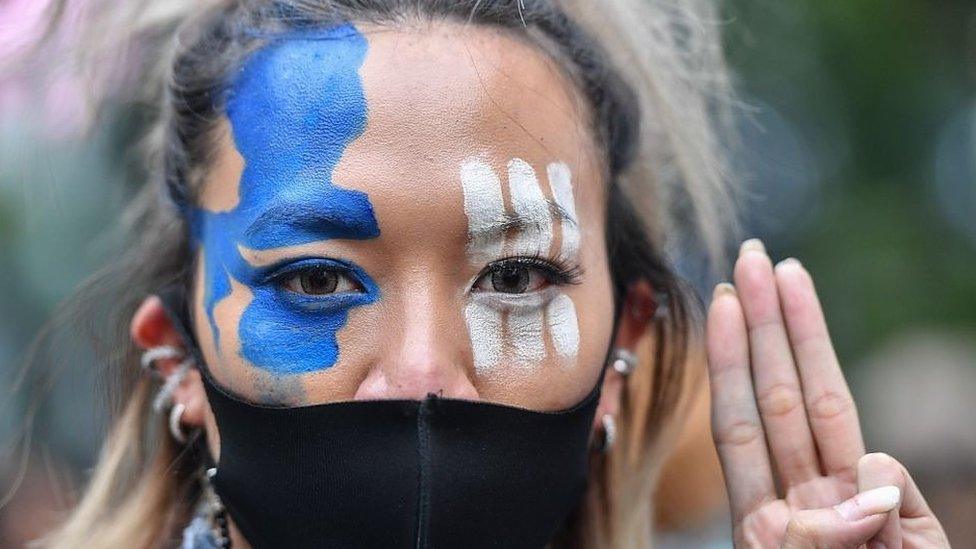
- Published18 October 2020
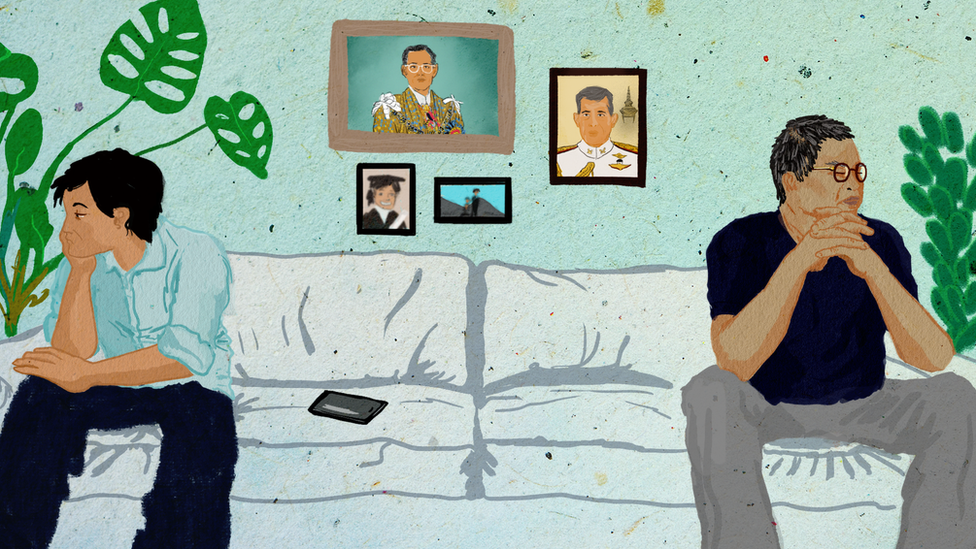
- Published8 September 2020
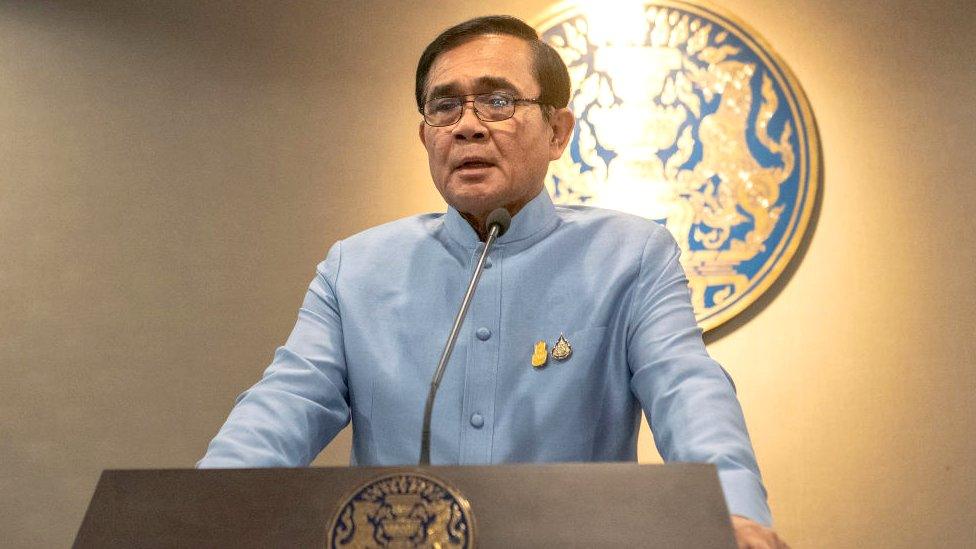
- Published2 July 2020

- Published15 October 2020
